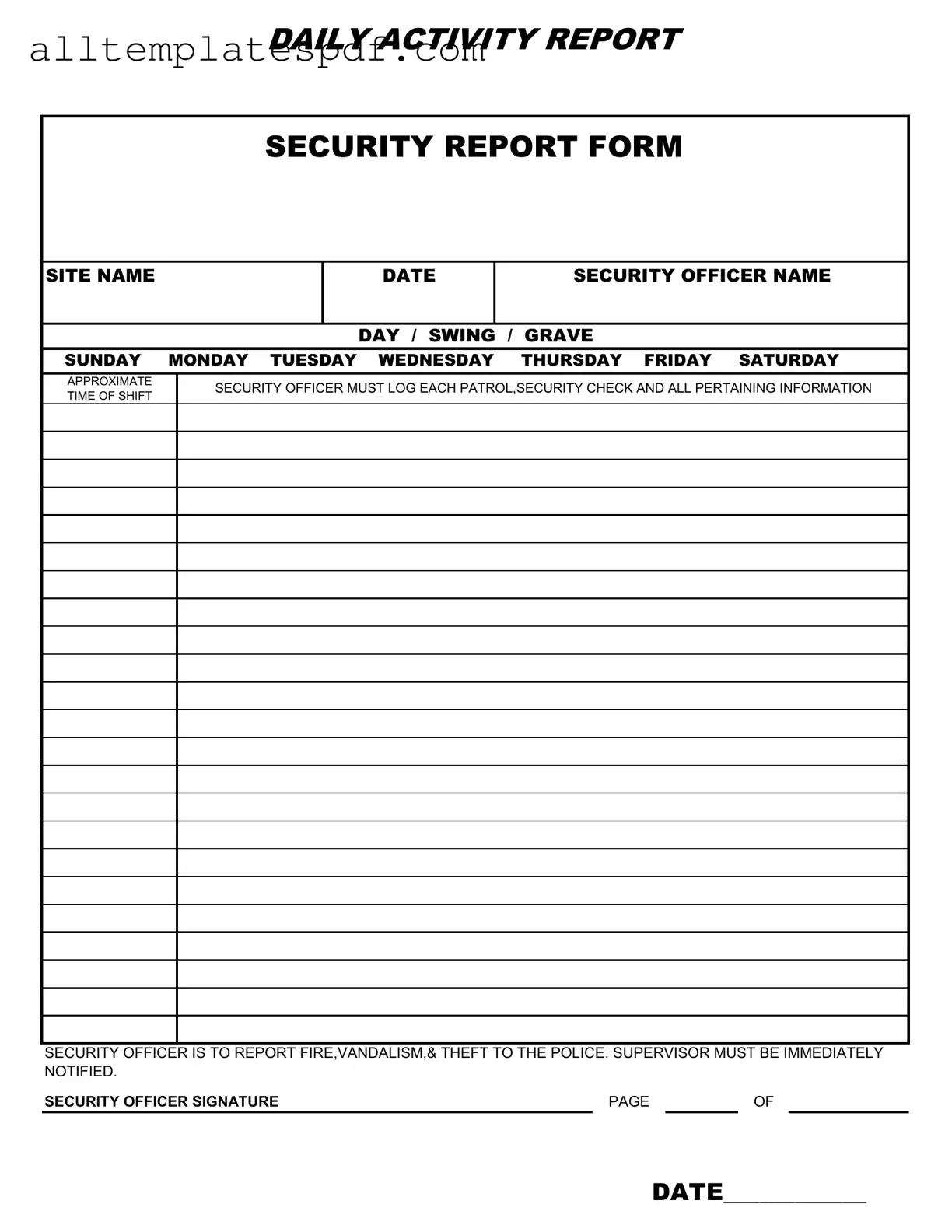Filling out the Security Guard Daily Report Sample form is crucial for maintaining accurate records and ensuring effective communication. However, many individuals make common mistakes that can lead to confusion or miscommunication. One frequent error is failing to include the site name. This information is essential for identifying where the report originated and for tracking incidents specific to that location.
Another mistake often seen is neglecting to specify the date of the report. A missing date can create ambiguity regarding when the events occurred, making it difficult for supervisors or law enforcement to follow up on incidents. Accuracy in reporting dates helps maintain a clear timeline of events.
Security officers sometimes forget to clearly indicate their name on the report. This omission can lead to accountability issues, as it becomes unclear who was responsible for the observations and actions documented in the report. Including the officer's name helps establish a direct line of communication for any follow-up questions.
Another common oversight involves the time of shift. Failing to log the approximate time can complicate the context of the report. It is vital to note when shifts begin and end, as this information assists in understanding the timing of any incidents reported.
When documenting patrols and security checks, some officers may provide vague descriptions or fail to log them altogether. This lack of detail can lead to gaps in the security narrative. Each patrol should be logged with clear and specific details to ensure a comprehensive overview of the day’s activities.
Additionally, officers sometimes overlook reporting significant incidents such as fire, vandalism, and theft. These occurrences must be documented immediately, as they require prompt action from both the police and supervisors. Failing to report these incidents can hinder the response and investigation process.
Moreover, not notifying the supervisor immediately after an incident can create delays in response. Timely communication is critical in security situations. Officers should be trained to understand the importance of quick reporting to ensure that appropriate measures are taken.
Lastly, the signature of the security officer is often missing from the report. This signature serves as a confirmation that the report is accurate and complete. Without it, the report may lack credibility and could be questioned later.
